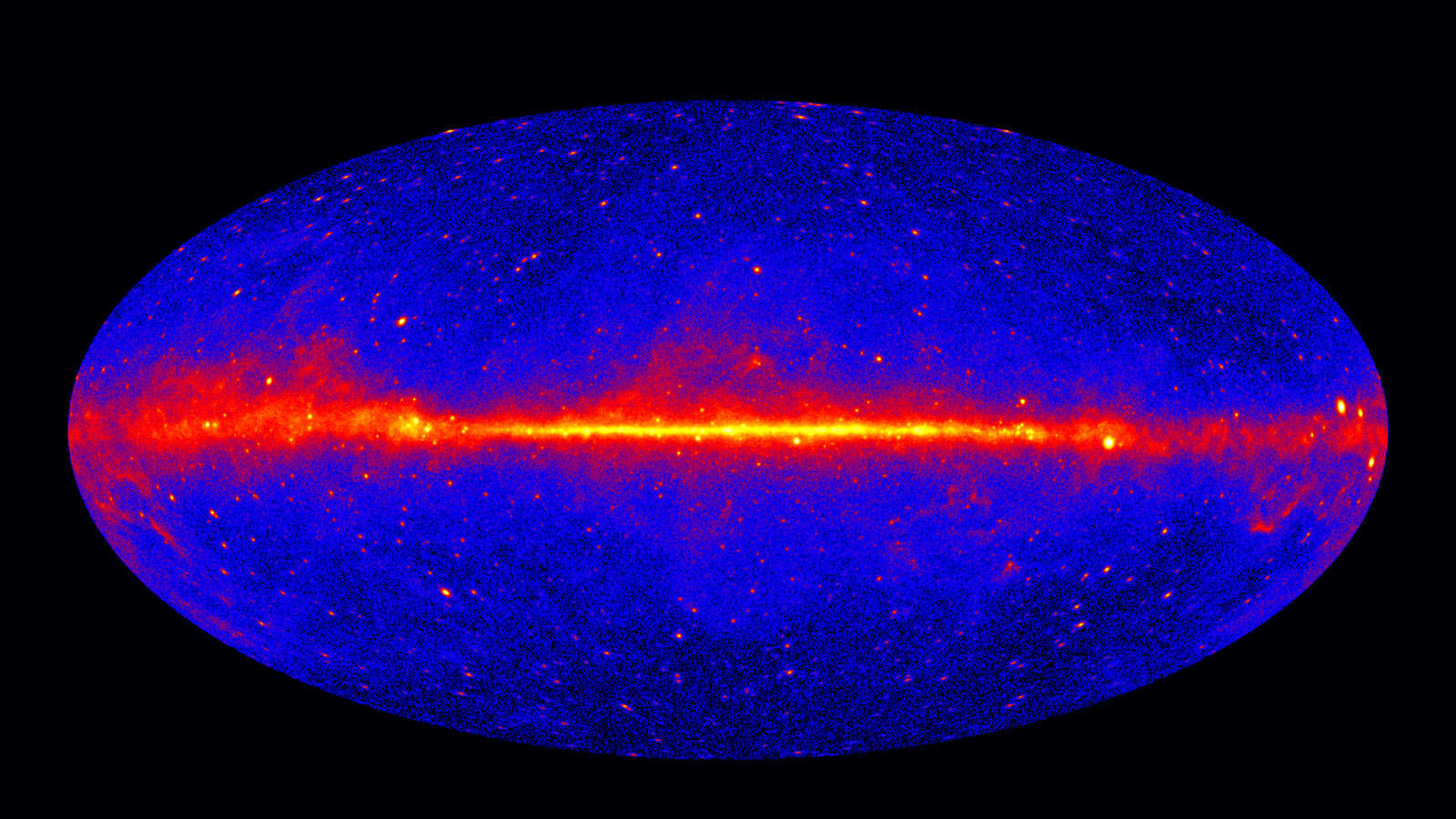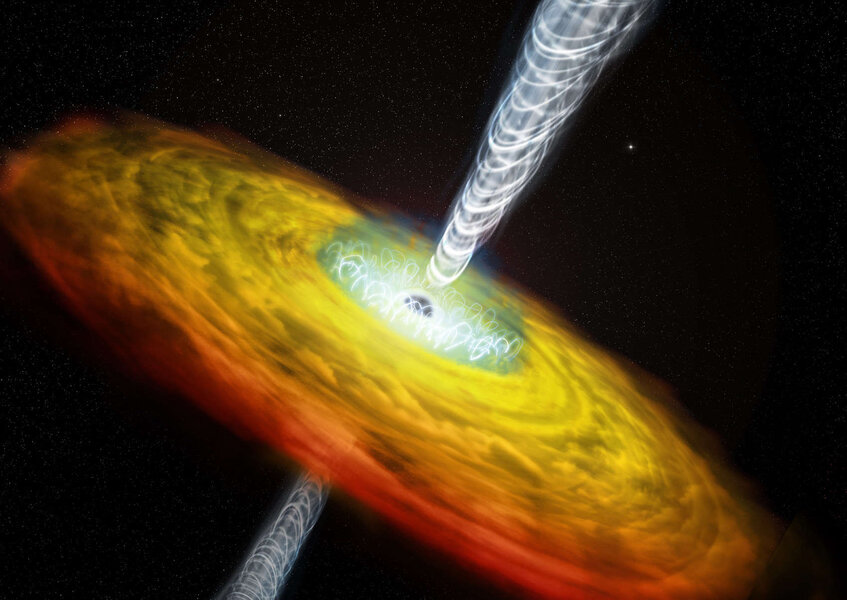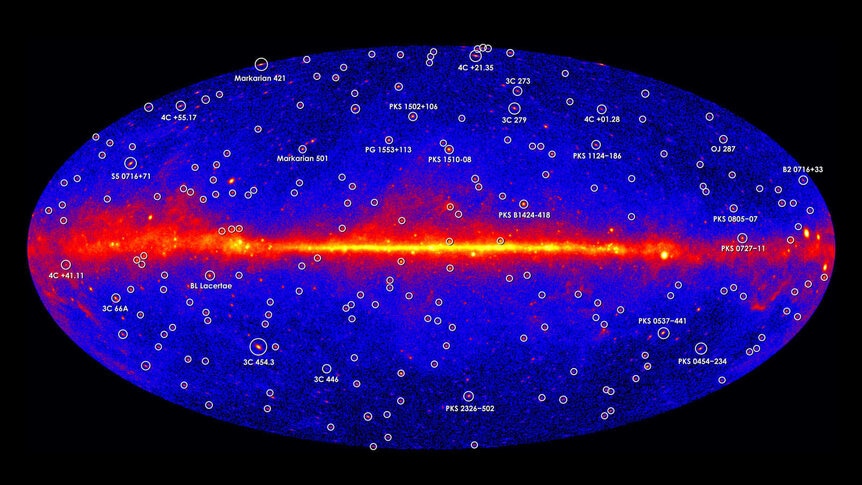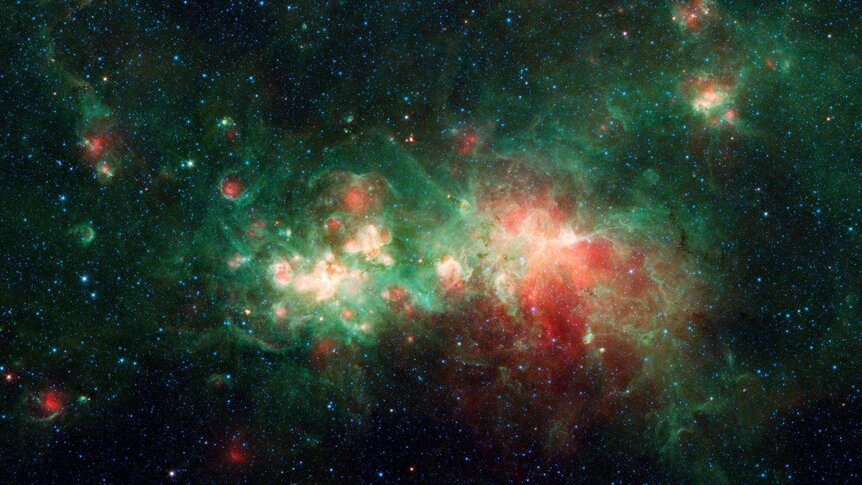Create a free profile to get unlimited access to exclusive videos, sweepstakes, and more!
A fog of gamma rays permeates the sky. Now we know why.

The Universe glows softly in gamma radiation.
This isn’t anything to be concerned about; we’re not all about to Hulk out. Well, to be more clear, this is nothing to be concerned about unless a) you’re an astronomer, and/or 2) you find the Universe a pretty interesting place and want to know more about it.
Lucky you: I’m #1 (and #2), and if you’re #2 then read on.
The Universe glows in lots of different flavors of light. For example, the Cosmic Background Radiation is a glow all over the entire sky made up of microwaves (low energy light similar to radio waves), which is left over energy from the Big Bang itself. There’s also a diffuse ultraviolet light glow from hot hydrogen gas floating around in and in between galaxies at the edge of the observable Universe.
There’s also a diffuse glow everywhere in the sky made of gamma rays. These are extremely high-energy forms of light, just like the kind of light we see (which we call visible light) except each gamma-ray photon, each particle of light, has a lot more energy packed into it than a visible light photon. A lot more: While there isn’t a good hard-and-fast defined lower limit to their energy, gamma rays typically have tens of thousands to billions of times the energy of visible light photons.
And the sky is glowing from them. It’s not a bright glow, so it’s not like these things are blazing down — that would be bad, since they can destroy cells and DNA, leading to unfortunate problems like radiation poisoning and death. But it’s detectable to orbiting observatories sensitive to these high-energy photons, and it’s not clear what the source of the glow is.
A new paper just published, however, may have cleared this issue up. If so, it’s a very big deal — we like to know where light comes from, since that’s how the Universe tells us what it’s doing — but it’ll take a few words to explain. They’re fun words though.
Visible light can be made by an object if you heat it up (think of something like an oven element, which glows red or orange as it heats up, or the Sun, which emits visible light because its made of hot gas). But gamma rays can’t be made that way; if you heat something up hot enough to make a decent amount of gamma rays it’ll disintegrate. That’s inconvenient.
Gamma rays are created in a number of different ways, but they’re non-thermal (meaning not related to heating up a gas). Typically, in astronomy, they’re made when subatomic particles like protons, electrons, or atomic nuclei are accelerated to ferociously high speed, just a whisker under the speed of light, usually by extremely strong magnetic fields. We generically call these zippy particles cosmic rays.
These create gamma rays in a couple of ways. A high-energy cosmic ray can slam into an atomic nucleus floating around in space — what we call the interstellar medium — and create a new subatomic particle called a pion. Pions aren’t stable, and rapidly decay into gamma rays.
The other way is that the cosmic ray hits a low-energy photon, like a visible light or infrared photon. They can exchange energy, with the cosmic ray giving a lot of its energy to the photon, cranking it up into a gamma ray (this is called inverse Compton scattering and if you’re a superdork then click that link for an extremely nerdy science joke; fairly warned be thee, says I).
Hang tight, we’re almost there.
So where do cosmic rays get such high energies? One is in magnetic fields that get wound up in material circling a supermassive black hole near The Point Of No Return. These magnetic fields are strong, and the monster black holes, located in the centers of galaxies, can blast out a lot of cosmic rays, and therefore gamma rays. These kinds of galaxies are called blazars, which is just cool, and there are a lot of them out there in the deep Universe.
In fact these have been thought to be the source of the gamma ray background, but it turns out they can’t be. They make up little point sources, dots of gamma ray emission in the sky, but they’re not spread out enough to make up the diffuse background. Think of it like being outside a town when it’s foggy; from a distance you see a bunch of streetlights that are discrete sources of light, but the fog is fuzzy and unresolved. Streetlights = blazars and fog = diffuse background. They’re different.
The scientists in the new work look instead to galaxies making lots of stars. If they make lots of stars they make some massive stars, too, and massive stars eventually explode as supernovae. Gaseous debris from the detonated star expands outward, creating extremely powerful shock waves. The gas has very powerful magnetic fields embedded in it, and these can bat around subatomic particles, accelerating them until they get near the speed of light, whereupon they escape and flee into space. These then make gamma rays as described above.
The problem is that the exact mechanisms haven’t been understood well… until recently. Some scientists made physical models of how cosmic rays from supernovae make gamma rays, and in a new paper a team of scientist used those models to figure out how many gamma rays star-forming galaxies emit and what their energies are. They tested their models against nearby galaxies (like Andromeda and NGC 253) as a proof of concept, and they worked! So they then used observations of more distant galaxies to figure out the gamma-ray emission from galaxies that are roughly 8–10 billion light years away; we see galaxies that far from us when the Universe was peaking in its ability to make stars, so most of the gamma rays should come from them.
What they found is that their model accurately matches both the brightness of the glow as well as its energy distribution (that is, how many gamma rays there are of various energies; think of it as the colors of the gamma rays). That’s pretty amazing! The models could’ve had any sort of results, but the fact that they match the observed glow so well implies they’re doing something right.
So it seems that the glow can be completely explained by fecund galaxies cranking out baby stars back when the Universe was about 4–6 billion years old, some of which exploded, made cosmic rays which made gamma rays, and then those crossed all that terrible distance to fall into our gamma-ray telescope’s detectors.
And that tells us more about what the Universe is like! These different diffuse glows are incredibly important; the Cosmic Microwave Background is considered proof of the Big Bang model of the Universe, and the ultraviolet glow tells us about stars being born in tiny galaxies right after the Universe cooled enough to form stars in the first place. And now this gamma-ray glow can be used to figure out how stars were formed and how galaxies behaved a few billion years later.
I tend to think of fog as an impediment to sight. But in fact it’s the fog itself that we have to see to be able to understand the bigger picture.
The Universe is an amazing place, but it’s sometimes also downright poetic.


















